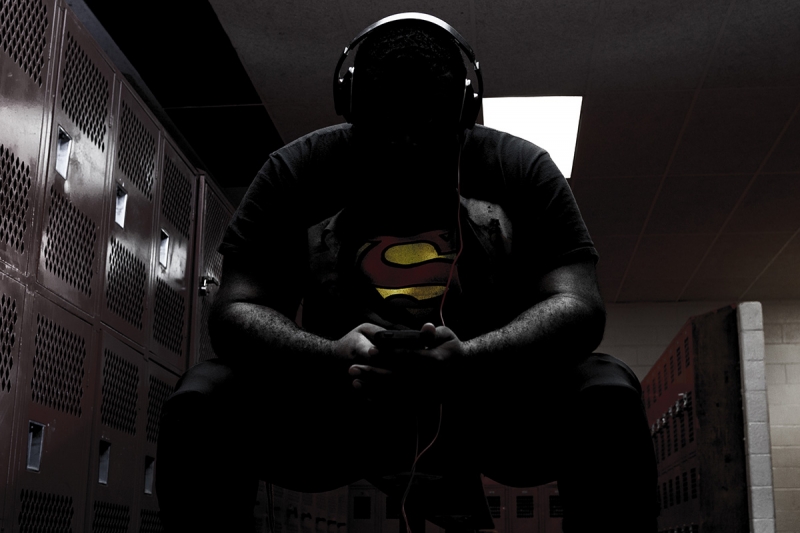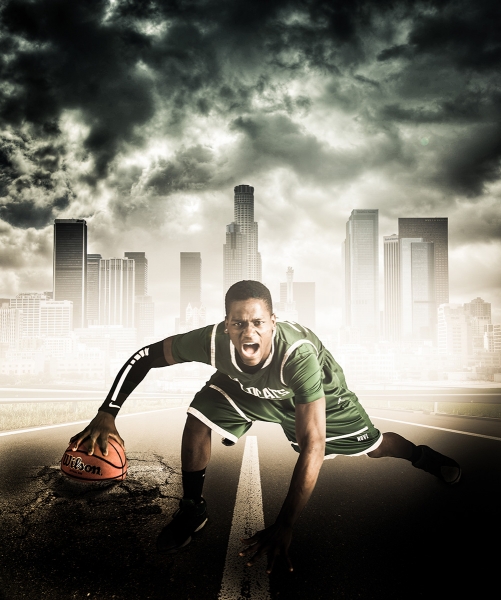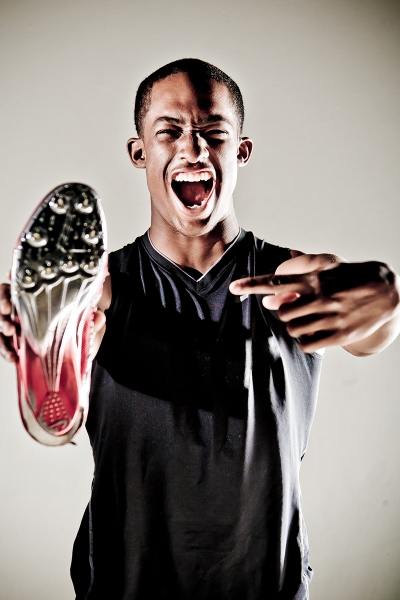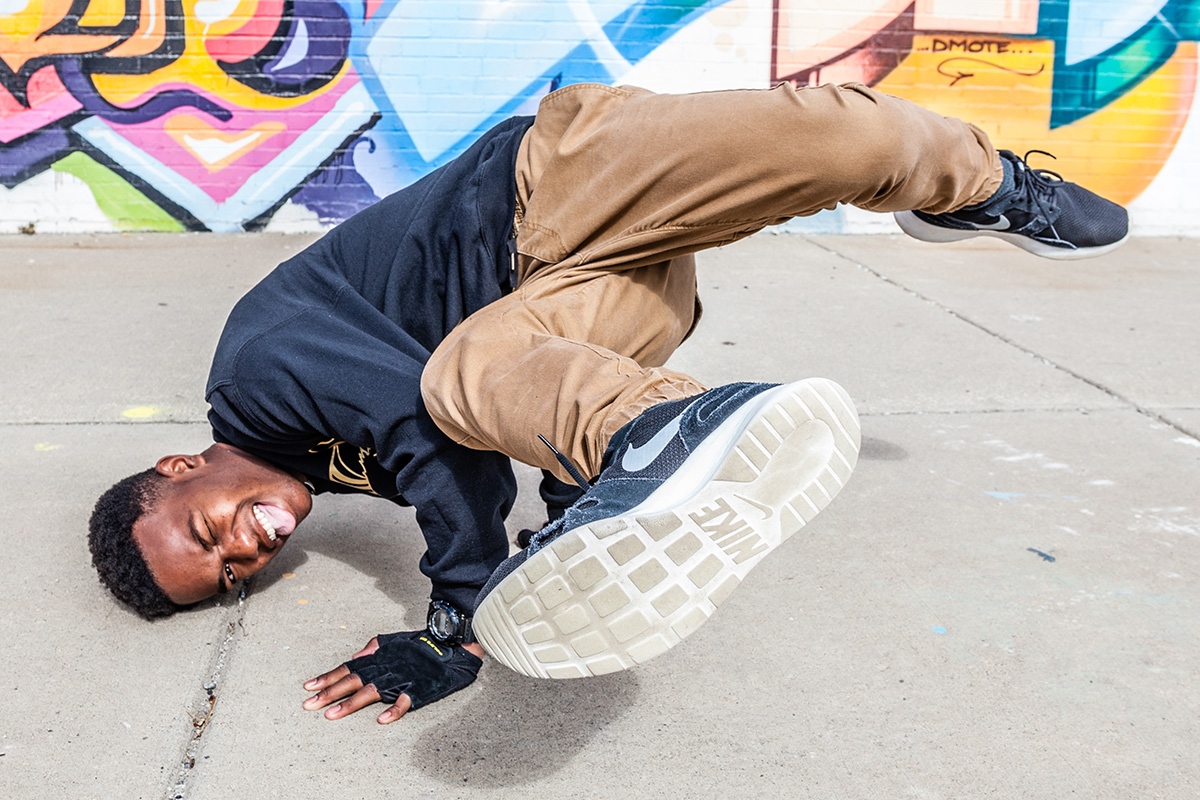From surviving to thriving
People give you their dollars if you offer them things they value. That's what seniors photographer Shawn Lee has found in Detroit.
• August 2016 issue
What you do when your city goes bankrupt and there’s no market for your services: get personal
Ed, a hulking high school senior with an introverted personality, was a tough nut to crack, and it was easy for Detroit photographer Shawn Lee to see where he got it. Ed’s mom seemed immovable, firmly telling Lee, who promises his student clients the hottest senior portraits, that her budget wasn’t budging.
“[She] said, Look Shawn, I don’t care how ‘hot’ the photos are, I’m not spending a lot of money,” Lee recalls.
But that was before he photographed the last frame—a striking photo of Ed suspended mid-air, face tilted skyward, almost like a superhero taking flight. Ed’s mom saw the image and started weeping.
“She began to cry because she realized this was her son and he was graduating,” Lee explains. In that moment, Ed’s family’s formerly strict budget went out the window, and they ended up ordering additional photos.

Advocacy and authenticity
In a way, this encounter was a microcosm of what Lee has experienced while growing his photography business in Detroit for the past decade. The city filed for Chapter 9 bankruptcy in 2013, but Lee says the first signs of a struggling economy were apparent as early as 2004, when he lost two warehouse jobs and decided to pursue photography fulltime. Since then, he’s discovered several secrets to making a business thrive during hard times. Chief among them: over-delivering on client expectations—as he did with Ed’s mom—and connecting with people on a personal level.
“People are a little tighter with their money when there’s not much of it to go around, but if you serve your client well and they trust you, they have no problem giving you their dollars,” Lee says. “Learn your subject, get to know them. I can’t tell you how many Thanksgiving and Christmas dinners I get invited to every year. People treat me like family. Go above and beyond, and you’ll have no problem in business.”
In the early going, just finding clients was the challenge. Lee says he started out offering deals on social media: “Headshot special!” “$100 off!” “50% off!” But that didn’t bring in much business.
“What I found is that people don’t need a photographer 100 percent of the time,” Lee recalls. “People relate to people.”
To tap into a more people-centered approach, Lee stopped leading with his business and started to align himself with causes close to his heart, his city being chief among them. With the local economy tanking, Detroit was increasingly being portrayed as one large ghetto. But that wasn’t the city Lee saw. So he went around town and created his own photo story called “I See Detroit.” One of the photos he took, a shot of Woodward Avenue, won the Spirit of Detroit Award given by the website World Architecture News and the global firm BuroHappold Engineering. As a result, the image went on display in London for four months in 2011.
“I See Detroit” evolved into a walking and bus tour of the city, during which Lee helps tourists photograph various sights while a guide recounts the history behind them.
“I became more than just a photographer; I became an advocate for Detroit … relevant to people and families who care nothing about photography,” Lee says.
This advocacy gradually began to translate to business. Lee says that after Detroit leaders started to hear about and take his tours, they hired him to make official city photos. He also picked up commercial sessions for local businesses. Lee’s prolific work as a youth mentor had a similar affect on his school photo and senior portrait business.
“It’s not about looking for the money. It’s about authentically serving people, and ways will be made for you,” Lee says. People in his community began to view him not just as the photographer they wanted but as the photographer they needed.

Dollars and sense
Pricing flexibility was important in those early days, Lee says.
“You can’t stick to some price structure or model that may work for someone in a different state or location. You don’t know what the economy looks like there,” Lee says. “Starting out, I adopted a style of negotiation. It was really about getting my foot in the door and saying, Hey listen, I really want to work with you guys, what can you do? Once you get your foot in the door and people see the quality of your work, then you can charge what you want.”
When planning his overall business strategy, Lee also looked to make the smallest investment for the greatest return. What he’s done with his senior portrait line of business is an example.
The average senior portrait client spends about $2,000 to $3,000 with Lee, and he’s refined his process so that he can complete a senior’s photos in five hours. That’s five hours from the initial phone consultation to final output. Doing the math (number of seniors times five hours divided by an eight-hour workday), Lee realized that if he did 50 senior portrait sessions a year, he could earn $150,000 in what amounted to 31 days, giving him plenty of time to take on other projects, both photography-related and otherwise.
“I can do other stuff that I want to do throughout the year,” Lee says. “I can travel. I can speak. I can mentor kids. I can run for city council.”

Explosive experience
Students vie for Lee’s 50 senior portrait spots each year not just because of the dynamic, one-of-kind photos he produces but because he’s turned these sessions into custom experiences.
Each session is an hour long, and he allows students to do as many outfit changes and poses as they can fit into that hour. Lee also brings snacks and allows subjects to invite friends and family. Since he photographs tethered, anyone watching can see the photos appear on a screen as soon as Lee takes them.
“Friends, teammates—they all look at the screen and explode at the same time. I can’t tell you the amount of yelling that takes place in the studio because people are having a great time,” Lee says. “I love that stuff.”
Of course, the excitement has a lot to do with the type of shots Lee is taking. Going off information he gleans from a pre-session phone consultation, the photographer does his best to capture his subject’s personality. He might ask a peanut butter-and-jelly aficionado to chow down on his favorite sandwich or have a football player crouch in a three-point stance before exploding off the line.
“I get them in action, doing what they do,” Lee says.
Lee tries to capture key relationships, too. One mom who disapproved of her son’s dreadlocks got to take part in a photo where she pretended to comb out his hair while her son wore a horrified expression.
“While we were doing that, the whole family was laughing,” Lee remembers. “It became a great joy, and it went into the album. It defined the senior year and really defined the relationship between him and his mom.”
Before presenting final images to clients at the sales meeting, Lee applies various post-production techniques, retouching skin, often adding type, and sometimes, as with the photo of mid-air Ed, adding a little something extra. To connect Ed’s action in the image to the concept of graduation, Lee titled the photo “Launching Out” and added flames beneath Ed’s feet as if he were a rocket lifting off.
It’s these extra touches that entice clients to buy more images, Lee says, no matter what the economy looks like.
If you do post-production efficiently and present those finished images to clients, the odds that they’ll buy all of them increases dramatically, Lee says. “But that’s, once again, serving your client well and holding their hands because they’re not the expert—you are.”
RELATED: See our gallery of senior portraits by Shawn Lee.
Deblina Chakraborty is a writer in Denver.


 View Gallery
View Gallery
